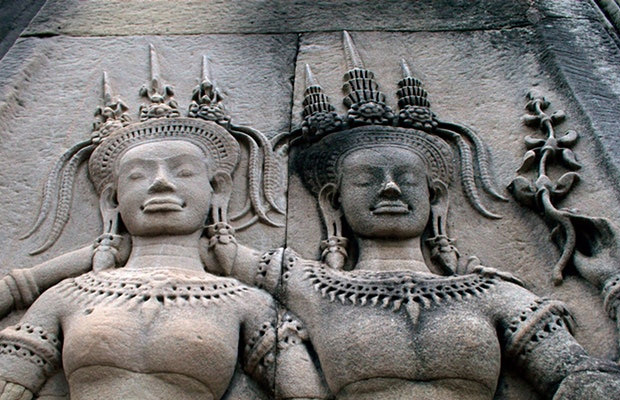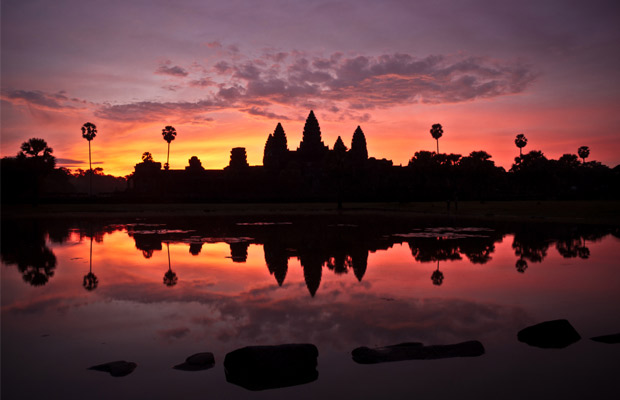Thommanon
Thommanon is one of two Hindu temples built during the reign of Suryavarman II (1113-1150) in Angkor, Cambodia. [1]: 119 This small and elegant temple is located east of the Victory Gate of Angkor Thom and north of Chau Say Tevoda. It is part of the UNESCO World Heritage, inscribed by UNESCO in 1992, entitled Angkor. The temple is dedicated to Shiva and Vishnu.
Thommanon is one of two Hindu temples built during the reign of Suryavarman II (1113-1150) in Angkor, Cambodia. [1]: 119 This small and elegant temple is located east of the Victory Gate of Angkor Thom and north of Chau Say Tevoda. It is part of the UNESCO World Heritage, inscribed by UNESCO in 1992, entitled Angkor. The temple is dedicated to Shiva and Vishnu.
History
Scholars who study the sculptures of the devatas in Thommanon concluded that Thommanon was built around the time when work at Angkor Wat was initiated. [3] However, there is some disagreement as to the precise date on which it was built. Some believe that the distinctive female sculptures, known as devatas, indicate that they were built during the reign of Jayavarman VI (1080-1113 AD), some time at the end of the 11th century. However, there is a greater agreement, especially taking into account the academic studies which was built by Suryavarman II around the time of Angkor Wat and Beng Mealea from 1111-150 AD
The Vaishnavite cult was adopted in Cambodia by Jayavarman II and his son Jayavarman III. Under these two rulers, the shaivite cult was subsumed with the Vaishnavite worship in temples such as Thommannon, Beng Mealea, Chau Say Tevoda, Banteay Samre, and Angkor Wat.
Thommanon is located opposite the Chau Say Tevoda and just 500 meters east of Victory Gate, on the way to Ta Keo. In the 1960s, the temple underwent a complete restoration, funded by the École française d'Extrême-Orient (EFEO). French archaeologists have restored and added concrete ceilings.
Structure
Thommanon is a one-tower temple with a central shrine oriented to the east, crowned by a prasat or tower. Access from the east is through a gopura, followed by a mandapa or antechamber, before arriving at the central sanctuary. [3] The temple sculptures are very well preserved and the aged sandstone provides a distinct contrast with the surrounding jungle. The architectural style of its tower is also similar to the temple of Angkor Wat and the nearby Chau Say Tevoda. [6] The temple is better preserved than the nearby Chau Say Tevoda, although both temples are similar in design. The reason for Thommanon's better preservation is attributed to the fact that its superstructure does not have wood beams enclosed in stone. Thus, the adoption of sandstone as a medium for sculptures in this temple made it more advanced in its architectural design compared to other nearby temples, which were mainly wood. All doors include carved pediments.
The compound walls around the temple disappeared, leaving only the entrance gates in the east and west; The central tower is all that remains of the main temple. It is inferred that Thommanon and Chau Say Thavoda were interconnected to the central tower under a large compound with large gates. The separate building separate from the main temple was the library.
Devatas
Left: Female Devatas in a corner panel showing with two different types of skirts. Law: More representations of female Devatas.
Images of Devatas, female divine figures, are seen in profusion here, as in other Khmer temples. They are the center of attraction in Thommanon. The devatas depict flower crowns, sampots, necklaces, armbands, belts and ankle bands. [4] The mudras displayed are complex. The devatas grasp the flower very distinctly, holding the ring and the middle fingers against the thumb, while the index finger and small finger are extended. An Angkor researcher calls this position the "devata mudra", and notes that it is also prominent in Angkor Wat. The first of the devatas are divided into two distinct types of sampot, a type is the old pleated style, seen in the period of Bakheng in Lolei and Phnom Bok (900 AD), and the other is a patterned fabric style with folds and "tail" in Angkor Wat. [4]
View Mores Temple Guide
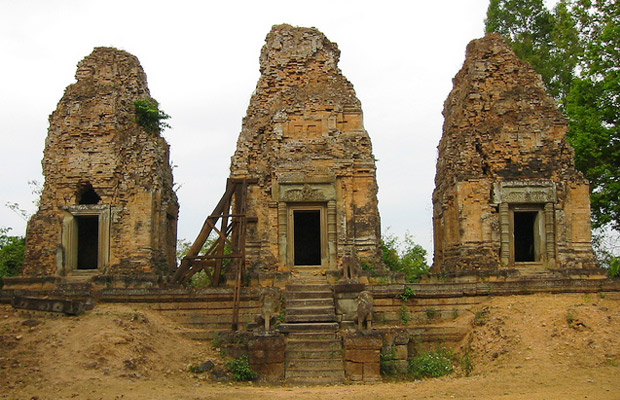
Bat Chum
Bat Chum (Khmer: ប្រាសាទបាទជុំ) is a small temple built by Kavindrarimathana, a scholarly Buddhist minister of the Khmer king Rajendravarman [1]: 116 in the middle of the ...

Prasat Thom
The main monument in Koh Ker is Prasat Thom. The stairway to the top is open to a limited number of visitors and the views are spectacular if you can stretch the heights. About 40 entries, dated from ...

Cambodia Culture Village
The Cambodian cultural village situated in the province of Siem Reap along the number 6 road distanced itself 3 km from the International Airport of Siem Reap and 5 km from the temple of Angkor Wat, ...
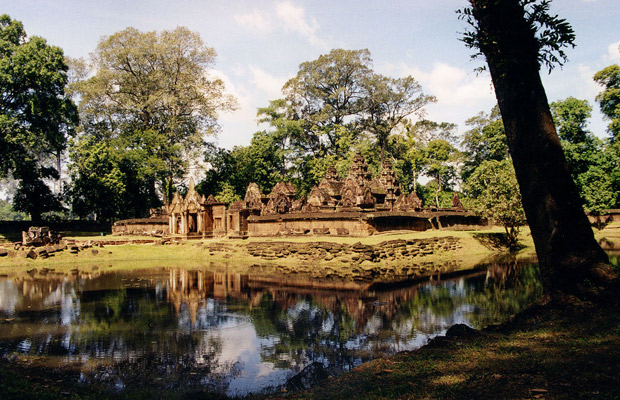
Banteay Srei Tours
The tenth-century temple of Banteay Srei is known for its intricate decoration carved in pinkish sandstone that covers the walls like tapestries. This site guarantees all the time that your schedule ...
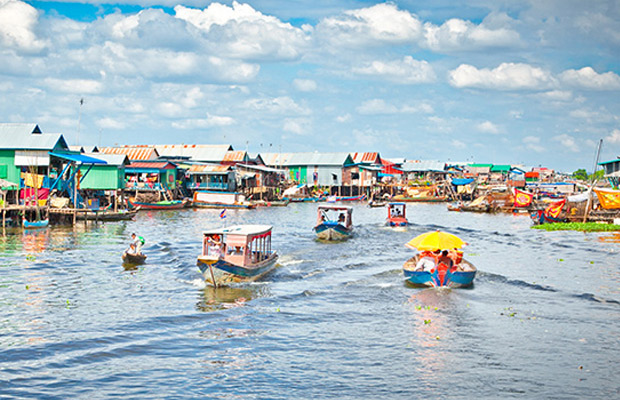
Chong kneas floating village
It is a kind of long and seaport canal about 12 km from Siem Reap, flanked by brown-green seats scrubbed to the west side from which you can see the edges of a part of the floating forest that makes ...

Banteay Chhmar
Banteay Chhmar (Khmer: បន្ទាយឆ្មារ) is a commune (khum) in the district of Thma Puok in the province of Banteay Meanchey in northwestern Cambodia. It is located 63 km north of ...

Ta Keo
Ta Keo had to be the state temple of Jayavarman V, son of Rajendravarman, who had built the Pre Rup. Like Pre Rup, it has five sanctuary towers arranged in a quincunx, built at the highest level of ...

Baksei Chamkrong
Baksei Chamkrong is a small Hindu temple situated in the Angkor complex (Siem Reap, Cambodia). He is dedicated to Lord Shiva and used to keep a golden image of him. The temple can be seen on the left ...

Prasat Chrab
This temple has two circular concentric walls. Three large laterite towers standing in a line rise in the center. Facing these are the remains of two prasats of ...
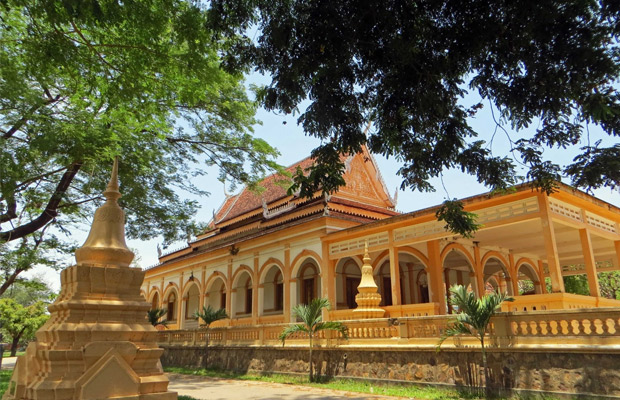
Wat Damnak
Wat Damnak is located near Phsar Chas aka Old Market, just opposite the Siem Reap River. If you were to stroll the Old Market, you would see the stone bridge directly in its southeast corner. Stroll ...

Siem Reap Bird Watch Day Tour
Find your bird specialist at your hotel and proceed with an air-conditioned car or minivan to the boats area. Transfer to a mini-boat, a special flat-bottom boat driven by experienced local drivers. ...

War Museum
The only selling point here is that the museum encourages visitors to handle the old weapons, from an AK-47 to a rocket launcher. We're not sure what health and safety is, but it's a good choice for ...





